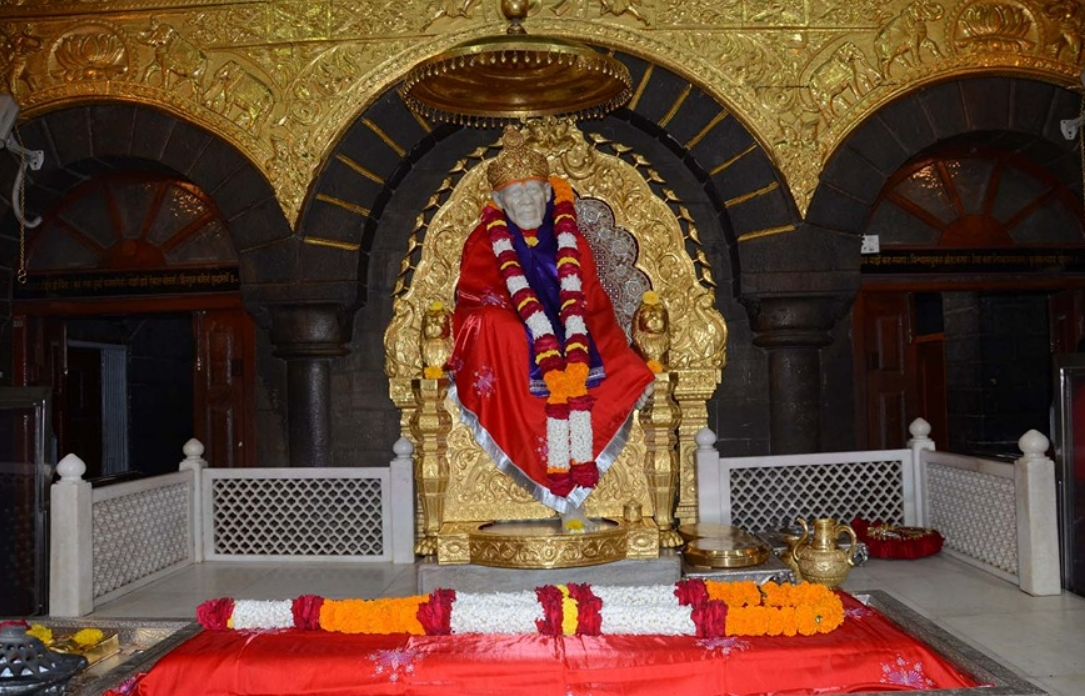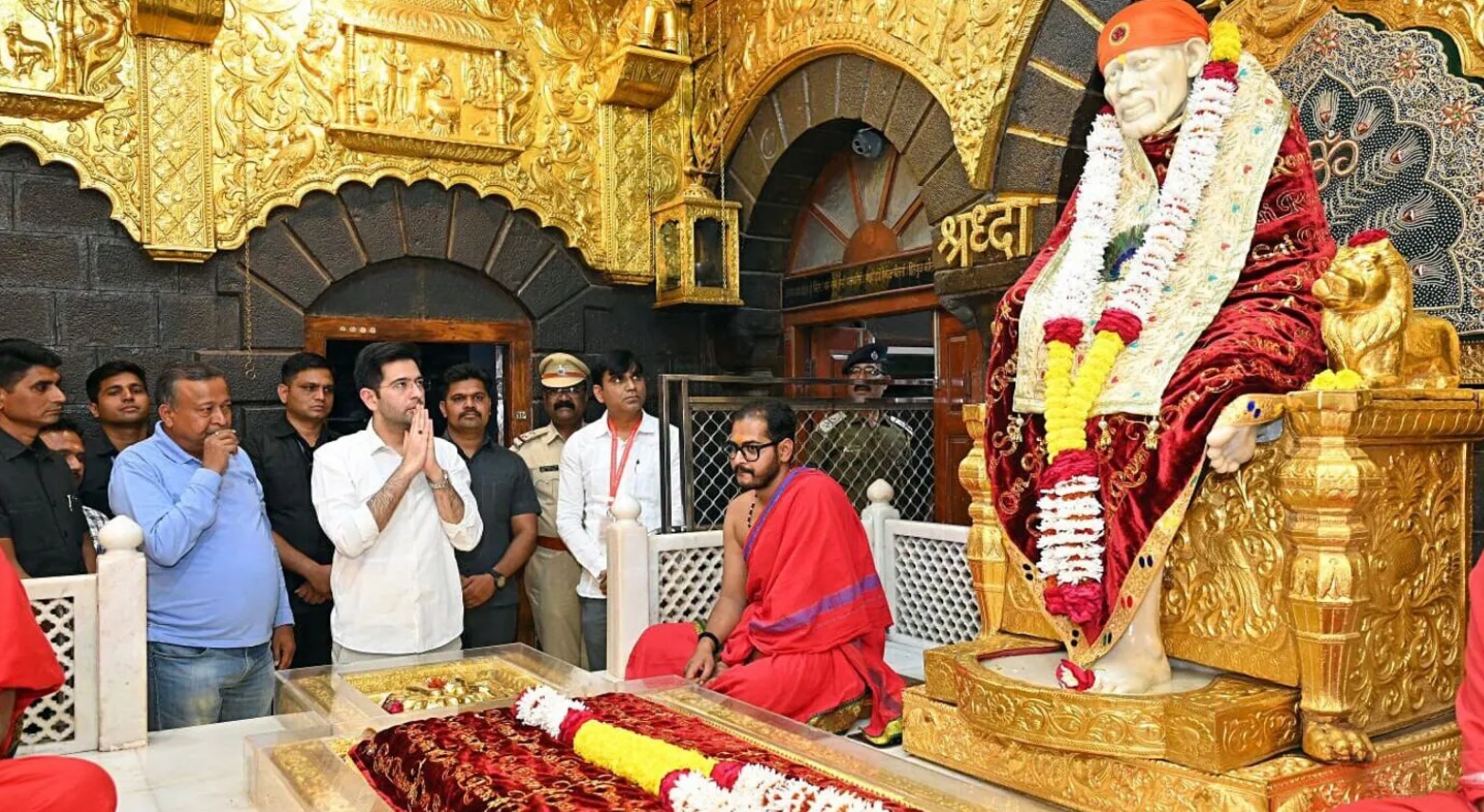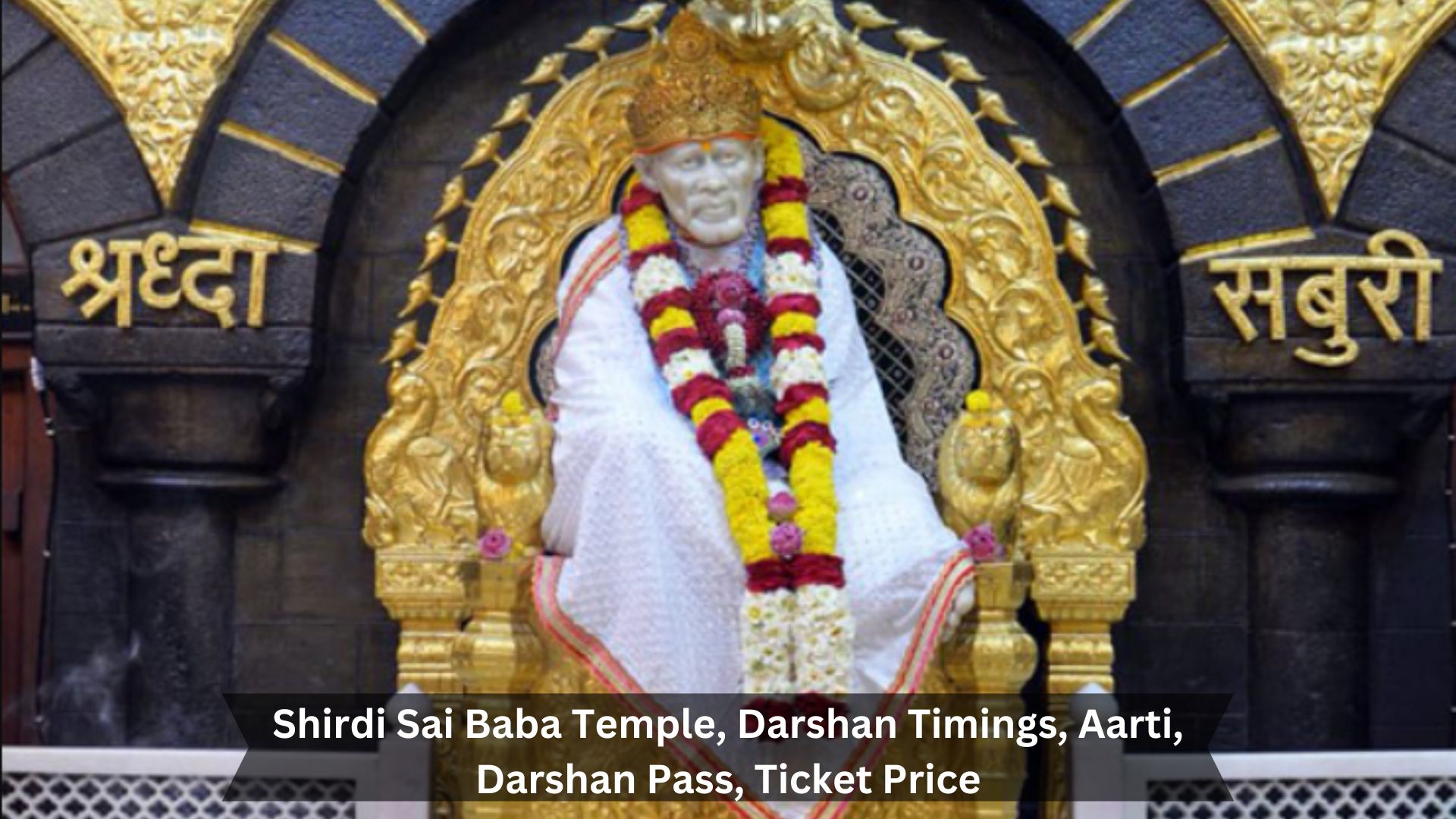Key Takeaways
- Visiting Shirdi Sai Baba Temple is free, but if you want to attend a unique Aarti, it’ll cost you between Rs. 100 and Rs. 400.
- There are four Aartis daily: Kakad, Madhyan, Dhoop, and Shej, and each has its own set of rituals.
- You can book your spot for Darshan and Aarti through the temple’s official website.
- While general entrance is free, you can pay extra for a more personal spiritual experience.
- Here’s when the Aartis happen: Kakad Aarti at dawn, Madhyan Aarti at noon, Dhoop Aarti in the evening, and Shej Aarti at night.
The Shirdi Sai Baba Temple is in the center of Maharashtra and is a special place where people come to honor Sai Baba. He was a spiritual leader who taught essential lessons about love, forgiveness, and helping others. People from many different religions visit this temple because Sai Baba’s message was about bringing people together.
The temple is always filled with prayers and chants, creating a peaceful place where people can think and find comfort. It’s not just a place to pray; it’s also a spot where people find hope and guidance in their busy lives.
Overview of Shirdi Sai Baba Temple
History and significance

Shirdi Sai Baba Temple is a critical spiritual site visited by many. It’s dedicated to Sai Baba, a respected leader Hindus and Muslims love. Sai Baba lived in the late 1800s and early 1900s. He taught about unity among all religions, blending Hindu and Muslim beliefs. He lived simply but thought deeply, which drew people from all backgrounds to him.
The temple is in Shirdi, Maharashtra, where Sai Baba spent much of his life. It also has his burial site. People worldwide come here to get blessings and feel the peace Sai Baba stood for.
Popular attractions
Shirdi Sai Baba Temple is a place of worship and a site rich in history and spirituality. Here, you’ll find the Samadhi Mandir, which holds the remains of Sai Baba. Nearby, there’s the Dwarkamai, an old mosque where Sai Baba spent much of his life.
Another spot, the Chavadi, is where he slept every other night. There’s also a museum within the temple grounds. It displays items from Sai Baba’s life, adding depth to the visit. These places help us better understand Sai Baba’s teachings and make the temple a key destination for his followers worldwide.
Darshan Timings and Ticket Prices
Different types of darshan
| Day of the Week | Morning Darshan Timings | Afternoon Darshan Timings | Evening Darshan Timings |
|---|---|---|---|
| Monday | 4:00 AM – 12:00 PM | 1:00 PM – 6:00 PM | 7:00 PM – 10:00 PM |
| Tuesday | 4:00 AM – 12:00 PM | 1:00 PM – 6:00 PM | 7:00 PM – 10:00 PM |
| Wednesday | 4:00 AM – 12:00 PM | 1:00 PM – 6:00 PM | 7:00 PM – 10:00 PM |
| Thursday | 4:00 AM – 12:00 PM | 1:00 PM – 6:00 PM | 7:00 PM – 10:00 PM |
| Friday | 4:00 AM – 12:00 PM | 1:00 PM – 6:00 PM | 7:00 PM – 10:00 PM |
| Saturday | 4:00 AM – 12:00 PM | 1:00 PM – 6:00 PM | 7:00 PM – 10:00 PM |
| Sunday | 4:00 AM – 12:00 PM | 1:00 PM – 6:00 PM | 7:00 PM – 10:00 PM |
Notes:
- Morning Darshan: Begins with Kakad Aarti at 4:15 AM.
- Afternoon Break: The temple closes for an hour at 12:00 PM.
- Afternoon Darshan: Resumes from 1:00 PM.
- Evening Darshan: Includes the Shej Aarti at 10:30 PM.
There are different ways to see Sai Baba’s idol at the Shirdi Sai Baba Temple. You can choose from free or paid options depending on what you prefer. Everyone can enter for free and see the idol anytime during the day. This is great if you just want a quick visit without spending money.
If you’re looking for something more unique, there are paid options too. The Aarti Darshan costs Rs. 100 per person. It lets you be part of the aarti ceremony, which is a spiritual ritual where lights are offered. For an even more personal experience, you can opt for the Special Aarti Darshan which costs Rs. 400 per person. This option gets you closer to the action during the aarti.
Booking procedures
To handle the large number of devotees, the Shirdi Sai Baba Temple has set up a transparent system for booking Darshan times and figuring out ticket costs. You can book your visit on the temple’s official website. It’s a good idea to book ahead to make sure you get to attend the Darshan or Aarti you want.
Here’s how you can book:
- For Online Darshan, use the temple’s official website.
- For Aarti Attendance, book in advance online.
- For Special Poojas, use the reservation system.
This way of booking makes the visit smoother for everyone and helps manage the crowds better, keeping the temple peaceful and respectful.
Price range for different timings
Understanding the price range for different Darshan timings at the Shirdi Sai Baba Temple helps you plan your visit better. The temple has several options depending on what you’re looking for. There’s no charge for general Darshan, so everyone can join without worrying about a fee. If you want a closer experience, the special Aarti sessions cost Rs. 100 per person.
For daily Poojas, it’s Rs. 200 per person. And if you’re looking for something more exclusive during the unique Aarti, that will be Rs. 400 per person. These prices help keep the crowd in check and ensure the temple services remain top-notch.
| Ticket Type | Price (INR) | Description |
|---|---|---|
| General Darshan | Free | Entry for general darshan |
| VIP Darshan | 200 | Faster entry for darshan |
| Aarti Ticket (Kakad) | 600 | Morning Aarti at 4:30 AM |
| Aarti Ticket (Madhyan) | 400 | Noon Aarti |
| Aarti Ticket (Dhoop) | 400 | Evening Aarti |
| Aarti Ticket (Shej) | 400 | Night Aarti |
| Accommodation Booking | Varies | Prices depend on the type of accommodation and availability |
Notes:
- General Darshan: No cost, but may involve longer waiting times.
- VIP Darshan: Provides quicker access and shorter waiting time.
- Aarti Tickets: Must be booked in advance, especially during peak times.
- Accommodation: Various options are available ranging from dormitories to deluxe rooms.
Aarti Timings
Types of aarti

At the Shirdi Sai Baba Temple, aarti ceremonies are held throughout the day, each with its own unique feel and importance. We start with the Kakad Aarti at dawn. It’s a way to ask for blessings for the day ahead. It’s pretty early but sets a positive tone for the day.
Sure, here is the table with the provided data:
| Time | Event |
|---|---|
| 4:00 AM | Temple opens |
| 4:15 AM | Bhupali starts |
| 4:30 AM | Kakad aarti begins |
| 5:00 AM | Bhajan in the Samadhi Mandir is chanted |
| 5:05 AM | Mangal Snaan is given in the Samadhi Mandir |
| 5:35 AM | Aarti “Shirdi Majhe Pandharpur” begins |
| 5:40 AM | Darshan begins in Samadhi Mandir |
| 11:30 AM | Dhuni pooja with ghee is performed in Dwarkamai |
| 12:00 Noon | Afternoon Aarti begins |
| 4:00 PM | Pothi which is a devotional reading starts in the Samadhi Mandir |
| Sunset | Dhoop Aarti starts |
| 8:30–10:00 PM | Devotional songs are sung in the Samadhi Mandir & Cultural Programmes are performed if scheduled |
| 10:30 PM | Shej which is the night Aarti |
| 11:15 PM | Samadhi Mandir temple shuts for the day |
Around noon, there’s the Madhyan Aarti. This is when people take a break from their day to pray and reconnect. As the sun begins to set, the Dhoop Aarti starts. This one is really peaceful and helps everyone wind down from the day.
Finally, there’s the Shej Aarti at night. This last aarti is quiet and calming, helping Sai Baba and us prepare for a restful night. Each aarti includes rituals and hymns that strike a chord with those attending. It’s a time for quiet thought and feeling close to something greater.
How to Reach by Train
| Starting Point | Transportation Mode | Route Details | Approximate Travel Time | Distance (Approx.) | Tips |
|---|---|---|---|---|---|
| Mumbai | Train (Sainagar Express) | Board train from CST/Dadar to Sainagar Shirdi Junction. | 6-7 hours | 240 km | Book tickets in advance during weekends/festivals. |
| Mumbai | Bus | Multiple private/government buses available from Mumbai to Shirdi. | 6-8 hours | 240 km | AC buses are more comfortable for long journeys. |
| Mumbai | Car | Via NH160 – Mumbai-Nashik Expressway towards Shirdi. | 4-5 hours | 240 km | Best for family trips; leave early to avoid traffic. |
| Pune | Train | Take train from Pune Junction to Sainagar Shirdi Junction. | 5-6 hours | 185 km | Fewer trains available, check schedules in advance. |
| Pune | Bus | Regular buses from Pune to Shirdi, including state and private operators. | 4-5 hours | 185 km | Travel by day to enjoy scenic views on the way. |
| Pune | Car | Drive via NH60 and NH160 towards Shirdi. | 3-4 hours | 185 km | Plan stops for refreshments at highway food joints. |
| Hyderabad | Train (Kacheguda Express) | Train from Hyderabad (Kacheguda) to Sainagar Shirdi Junction. | 14-16 hours | 620 km | Opt for sleeper coaches for overnight comfort. |
| Hyderabad | Flight + Taxi | Fly from Hyderabad to Aurangabad, then take a taxi to Shirdi. | 4-5 hours (incl. layover) | 550 km (approx.) | Pre-book a taxi for convenience from Aurangabad. |
| Delhi | Train (Shri Sai Express) | Train from Delhi to Sainagar Shirdi Junction. | 24-26 hours | 1,450 km | Choose AC class for comfort on a long journey. |
| Delhi | Flight + Taxi | Fly to Aurangabad or Pune, then take a taxi or bus to Shirdi. | 6-8 hours (incl. layover) | 1,250 km (approx.) | Check flight schedules; pre-book taxis from airport. |
| Bangalore | Train (Sainagar Express) | Train from Bangalore to Sainagar Shirdi Junction. | 24-26 hours | 1,030 km | Plan for an overnight journey for convenience. |
| Bangalore | Flight + Taxi | Fly to Pune or Aurangabad, then take a bus/taxi to Shirdi. | 5-6 hours (incl. layover) | 850 km (approx.) | Booking a round-trip taxi can save money. |
| Chennai | Train (Shirdi Express) | Take train from Chennai to Sainagar Shirdi Junction. | 26-28 hours | 1,250 km | Best to book well in advance, especially during holidays. |
| Chennai | Flight + Taxi | Fly to Pune/Aurangabad, then hire a taxi or take a bus to Shirdi. | 6-7 hours (incl. layover) | 1,150 km (approx.) | Direct flights are rare, plan in advance. |
| Kolkata | Train (Howrah Express) | Train from Kolkata to Sainagar Shirdi Junction. | 30-32 hours | 1,825 km | Opt for longer duration trains for budget trips. |
| Kolkata | Flight + Taxi | Fly to Pune or Aurangabad, then take a taxi or bus to Shirdi. | 7-8 hours (incl. layover) | 1,600 km (approx.) | Flights save time; book taxis from the airport. |
| Nagpur | Train (Nagpur-Shirdi Exp) | Train from Nagpur to Sainagar Shirdi Junction. | 12-14 hours | 620 km | Try to book overnight trains for added convenience. |
| Nagpur | Bus | Several buses operate from Nagpur to Shirdi. | 12-14 hours | 620 km | AC buses are more comfortable for long travel. |
| Nagpur | Car | Drive via Nagpur-Aurangabad Highway. | 10-11 hours | 620 km | Long drive, so plan rest stops en route. |
nearest railway station
If you’re taking the train, the closest station is Sainagar Shirdi Railway Station, just 3 kilometers from the Shirdi Sai Baba Temple. It’s linked to big cities like Mumbai, Pune, and Hyderabad, making it easy for travelers.
There are plenty of trains, so getting there is straightforward. When you arrive at the station, you can find taxis, rickshaws, or buses without any trouble. They’ll take you right to the temple. This easy access lets you focus on your visit to the temple, without the stress of figuring out how to get there.
Conclusion
The Shirdi Sai Baba Temple in Maharashtra is essential for many spiritual seekers. It offers organized visits and prayer services that meet the needs of those who come to worship. You can book your visit online, which makes planning easier.
The temple holds several daily ceremonies, showing its dedication to keeping religious traditions alive. Let’s talk about how this works. When you want to visit, you can simply go online, check the times for prayers, and book your spot. This way, you don’t have to wait in long lines and can enjoy your spiritual journey more peacefully. It’s great that the temple makes it so straightforward for everyone.
For regular updates and engaging articles on Indian temples, visit BestBengaluru.com.

Deepak Sharma is a passionate writer and avid traveler who specializes in uncovering the beauty and history of India’s attractions and temples. A graduate of Delhi University, Deepak has a deep-rooted love for his country and its rich cultural heritage.
